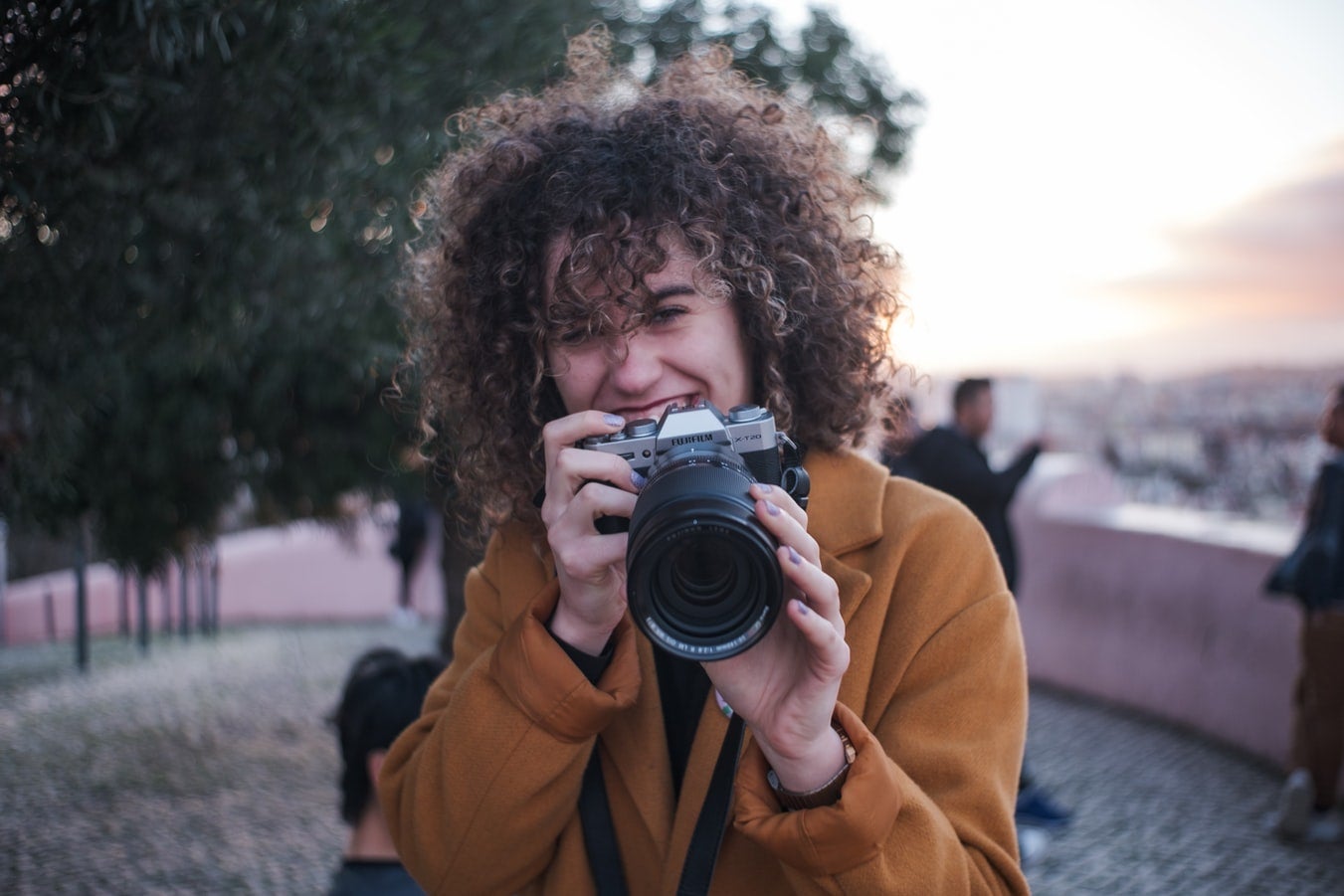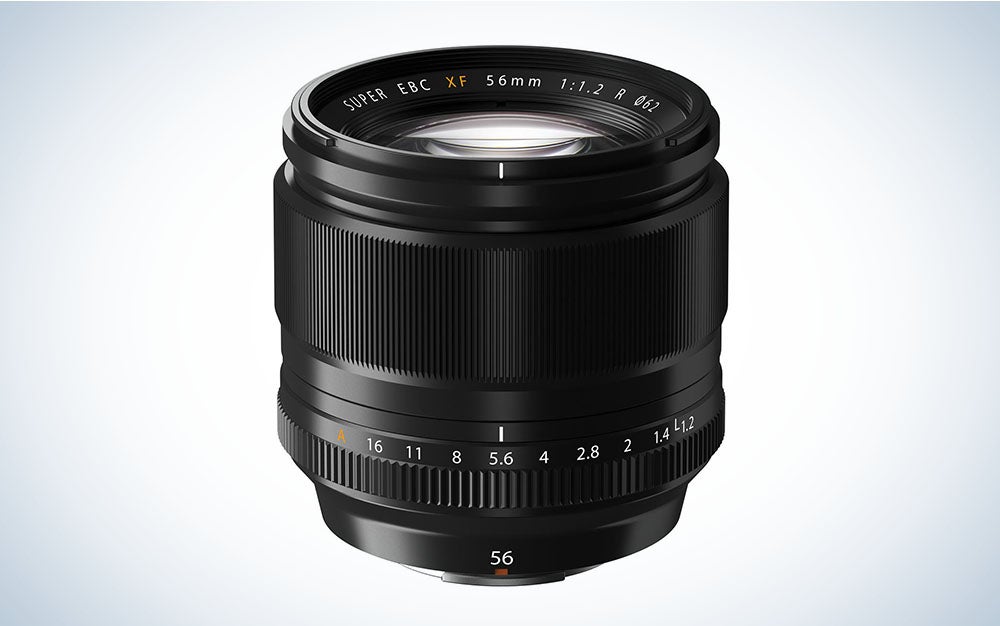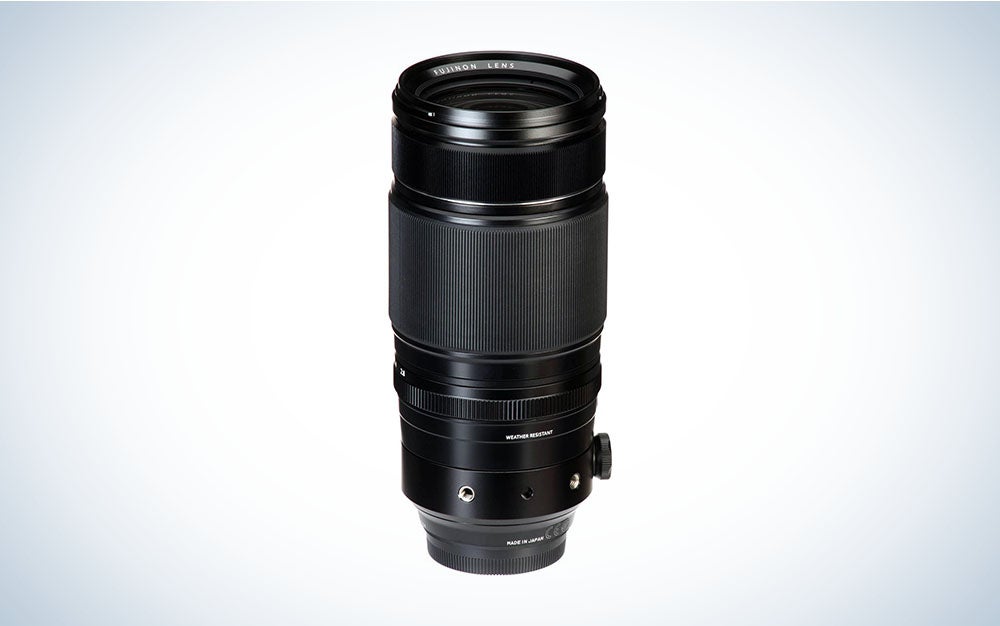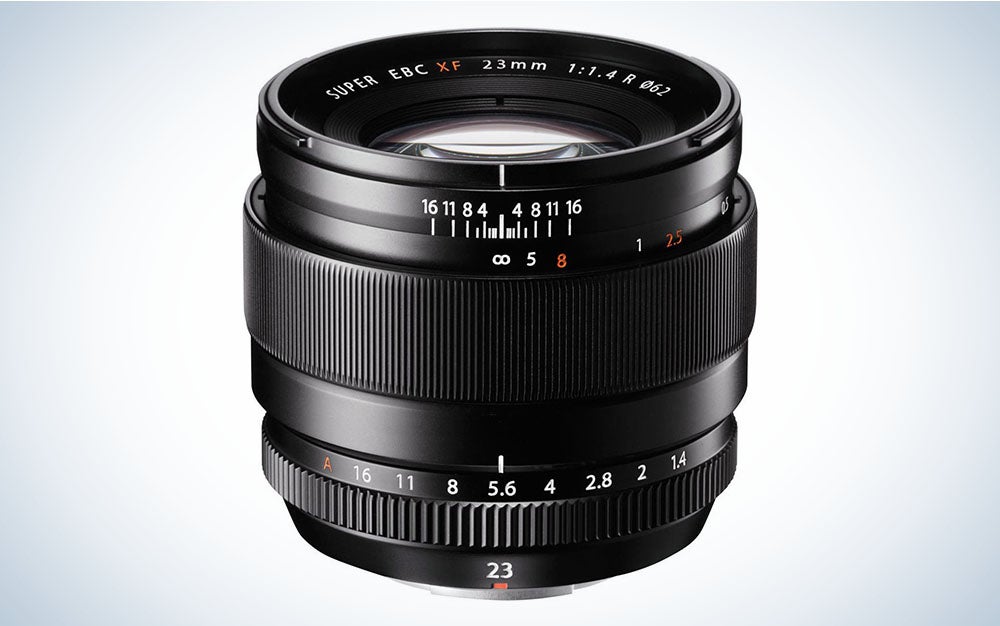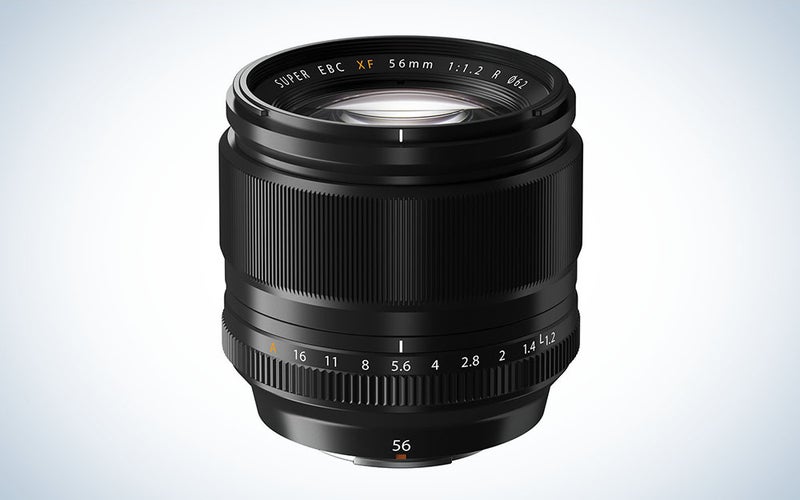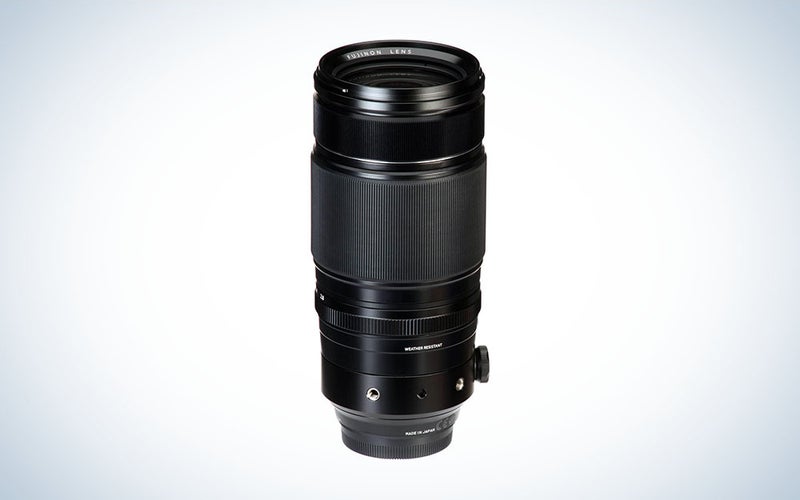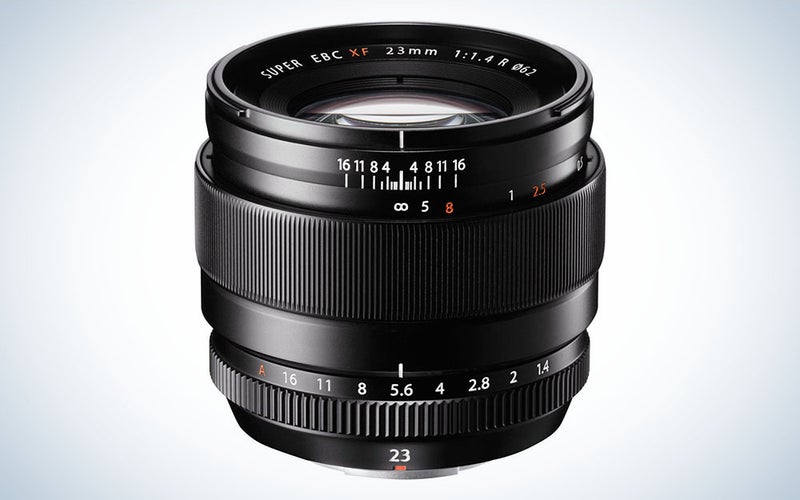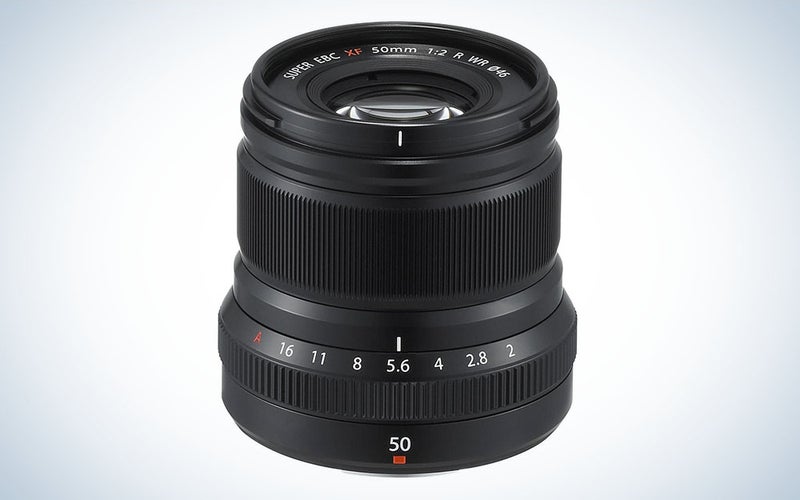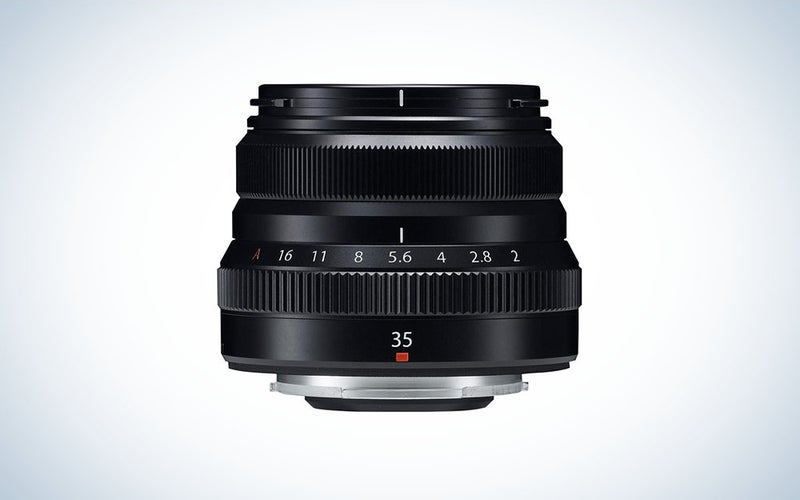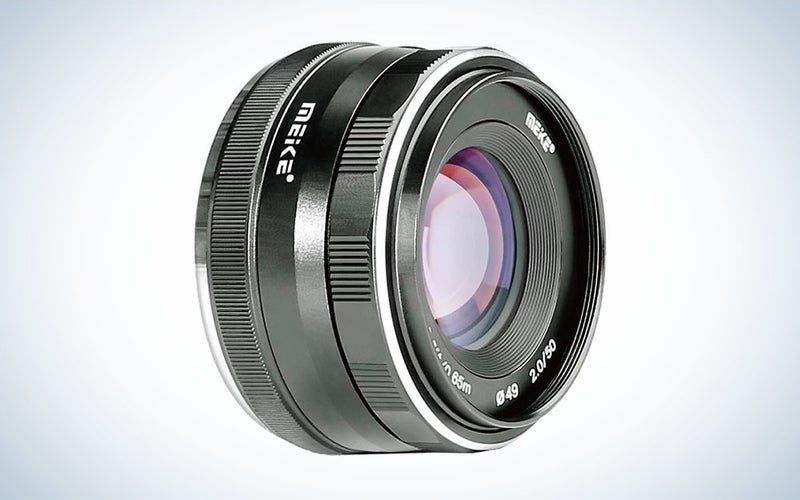We may earn revenue from the products available on this page and participate in affiliate programs. Learn more ›
Fujifilm’s range of mirrorless cameras has become increasingly popular with professional photographers, portrait photographers, and hobbyists alike. The bodies promise excellent image quality, solid color reproduction, and fast autofocus in compact packages. Likewise, Fuji lenses tend to cost less than and also outperform other brands’ equivalent glass. Here we consider, specifically, the best lens for portraits from Fujifilm.
- Best lens for portraits: Fujifilm XF 56mm F/1.2 Lens
- Best zoom lens for portraits: Fujifilm XF 50-140mm F/2.8 R LM OIS WR Lens
- Best wide angle prime lens for portraits: Fujifilm XF 23mm F/1.4 R Lens
- Best travel-friendly lens for portraits: Fujifilm XF 50mm F/2 WR Lens
- Best cheap lens for portraits, under $400: Fujifilm XF 35mm F/2 WR Lens
- Best cheap lens for portraits, under $100: Meike 50mm F/2.0 Manual Focus Lens for Fujifilm X
What to Look For in the Best Portrait Lens from Fujifilm
The best lens for portraits made by Fujifilm — and really, any great camera lens — should be comfortable to use when shooting handheld or on a tripod. Fujifilm’s mirrorless camera bodies are already far more streamlined and easy to carry than DSLRs with comparable image quality, and their lenses follow suit.
From there, it’s a consideration of your shooting environment and style. If you want versatility, look for a zoom lens, which offers a variety of focal lengths in one package. If you’ll be stuck in close but want context in the image, or have your choice of vantage points but want to take environmental portraits, look to a wide-angle lens. And if you want the best traditional portrait lens, you’re looking for something around 80mm (which is just over 50mm in Fuji lenses, in terms of equivalency). And in any portrait lens, more than anything else, do not skimp on maximum aperture, and make the investment in getting that lower f number. It will provide smooth bokeh, sharp focus, and solid low-light performance.
Note: We are looking here at X-mount lenses, which are used on the majority of Fuji’s cameras. If you’re looking for their GFX medium-format mirrorless camera line (first released in 2017), those use G-mount lenses.
What makes a camera lens good for portrait photography?
A wide aperture allows for blurring of the background and bokeh, so you want a lens with a low f-number. You also want a focal length or zoom range that will allow you to stand comfortably with the portrait subject in the shooting environment, without having to be pressed way back against a wall. Sharpness is essential for any lens, but it’s particularly crucial when shooting portraits.
Best lens for portraits: Fujifilm XF 56mm F/1.2 Lens
Fujifilm
Portrait photographers who try this Fujifilm 56mm lens typically never look back. It’s sharp all the way at f/1.2 (also an outstanding aperture range for portrait photography, and pretty unparalleled at this price point) with natural, exceptional bokeh and color. Its fixed focal length feels like an 85mm lens on a full-frame camera, which is a tried-and-true portrait setup. It is also extremely quiet, as are Fuji’s camera bodies, so the DSLR’s loud announcement of every frame can be a thing of the past.
Fuji also sells a version of this lens with an APD (apodization) element to boost bokeh. With some lenses, there’s a serious difference with APD, but this Fuji lens, as-is, absolutely excels in terms of bokeh for portrait photography, and the APD version costs 50% more, at $1,499 vs $999. So if money is no object or any background enhancement is worth it for your career lane, go for it, by all means. But in reviewing a large number of comparison photos, we found the difference between the two fairly negligible, and not worth the price difference — especially when their f/2 prime lenses cost less than the APD price difference.
Will you need to zoom in on your portrait subject?
If you’re shooting from afar — or won’t have full control over where you can stand while shooting portraits — a zoom portrait lens is an investment worth making. Event and wedding photographers, pay attention to this one for ceremony shots. Zoom lenses as a rule don’t have apertures that open as far as prime lenses, but you’ll still want to look for the low end of f-stops (generally around f/2.8 for zoom lenses), as lenses that only open to f/3.5 or f/4.5 will not be satisfactory as a lens for portrait photography.
Best zoom lens for portraits: Fujifilm XF 50-140mm F/2.8 R LM OIS WR Lens
Fujifilm
A weather-resistant (WR) Fuji zoom lens with optical image stabilization (OIS) and a linear motor (LM) for focusing, this one has all the essential elements required for a portrait shooter. With the motor focus and a barrel that doesn’t need to change length to zoom, shots are quiet, images are sharp, and it’s far less unwieldy of a zoom lens to manage than its counterparts. These factors, with the 50-140mm (76-213mm equivalency) focal length and aperture opening to f/2.8, make it the best Fuji lens for portraits when you need to zoom.
Do you want to take environmental portraits that include the subject and their surroundings?
Portrait photography doesn’t always mean a close-up, and it’s better to have your lens accommodate that space around the subject than having to take 50 steps back, which, in plenty of locations, isn’t even possible. Wide-angle lenses can be challenging for portraits, but they can also be extremely rewarding. However, by not going too wide in your purchase, watching how you’re holding the camera (angle contributes to distortions), and looking for a portrait-friendly aperture can allow a wide-angle lens to open up your repertoire for portraits — and feasible shooting locations — quite a bit.
Best wide angle prime lens for portraits: Fujifilm XF 23mm F/1.4 R Lens
Fujifilm
At 23mm (35mm equivalency) with a portrait-friendly aperture that opens to f/1.4, this Fuji prime lens is something of a rare find. It’s fundamentally our pick for best Fuji portrait lens, just at a wider angle—and if looking for more than one lens, the two together would make an excellent lens set for a portrait photographer to swap between depending on settings.
Are weight, size, and weather resistance concerns for you with camera gear?
DSLRs are big and bulky, but mirrorless cameras cut down on size and weight. Even within the mirrorless world, you may sometimes need the most compact lens you can find to get the job done, particularly with travel, street photography, and using the camera in your daily life. After all, if you’re taking it to a barbecue, much less on a trip, chances are you’d rather sling something light.
Best travel-friendly lens for portraits: Fujifilm XF 50mm F/2 WR Lens
Fujifilm
Fuji makes a range of f/2 prime lenses for around $400 that make exceptional photos for a reasonable price. At 50mm (76mm equivalent) and weighing only 7 oz. (200g), this particular camera lens is one of the best Fujifilm lenses for portraits when a lightweight and slim profile are the non-negotiable deciding factors.
Budget Picks: Best Cheap Lenses for Portraits with Fujifilm Cameras
Cheaper lenses obviously don’t perform at the same level as their expensive siblings, but they’re often still capable of producing wonderful images. You’ll sacrifice speed and precision of focusing, and silence. Those are all things you can workaround, however.
Shooting on Fujifilm cameras, however, you have a number of affordable options. Fujifilm makes a slew of excellent lenses in the $300–$500 range. With those, you’ll be sacrificing something, generally a smaller maximum aperture, but the sacrifice is not nearly as great as what you’ll be used to making with substitute lenses for Canon and Nikon.
That said, there aren’t—yet—many non-Fuji-made lenses for Fuji cameras, so there are fewer makes to consider for cheap lenses.
Best cheap lens for portraits, under $400: Fujifilm XF 35mm F/2 WR Lens
Fujifilm
Budget pick or not, this Fuji lens is an excellent one to have in your bag. Slightly wider (and $50 less) than our pick for the best travel-friendly lens, it brings Fuji precision to its focus, operation, and image quality. The aperture opens to a portrait-friendly f/2, and the 35mm (53mm equivalency) focal length strikes a nice one-lens balance for close-up and wider portraits with a few steps on the part of the photographer.
Best cheap lens for portraits, under $100: Meike 50mm F/2.0 Manual Focus Lens for Fujifilm X
Fujifilm
To be very clear: This lens only has manual focus, no autofocus. It also sells for about $80. If you prefer manual focus and have plenty of time to set up your shots, or think it sounds like a fun challenge, have at it. Otherwise, save up for a lens with autofocus.
FAQs
Q: Which Fuji prime lens should I buy?
If you’re looking to buy a Fuji prime lens at an affordable price for travel, street photography, non-specialized portraits, and general use — and can only use one lens for everything—we’d go with the Fujifilm XF 35mm F/2 WR Lens (also our budget pick, so you luck out on price). The 56mm f/1.2 is incredible if you can swing the $1,000 price.
Q: Which are the best Fujifilm lenses?
The best Fuji lens for portraits is the Fujifilm XF 56mm F/1.2 Lens. The best wide-angle Fuji lens (still with a portrait-friendly aperture range!) is the Fujifilm XF 23mm F/1.4 R Lens. And the best zoom Fuji lens is the Fujifilm XF 50-140mm F/2.8 R LM OIS WR Lens.
Q: What does WR mean in a Fuji lens?
WR in a Fuji lens means Weather Resistant. Lenses with this designation have seals to prevent moisture and dust from getting inside and damaging the lens.
The Best Fujifilm Lenses for Portraits: Recap
In choosing a portrait lens, above all prioritize focus and image quality, as wide of an aperture as you can find, and the focal length that’s right for the environment you’re shooting in, and how close or far you’ll be from the subject. Fuji camera sensors and camera lenses are excellent for portraits, and several (most particularly our top pick) have earned a following of extremely dedicated fans. Once you start shooting Fuji mirrorless — and try that lens!— we’re confident you’ll understand why.
